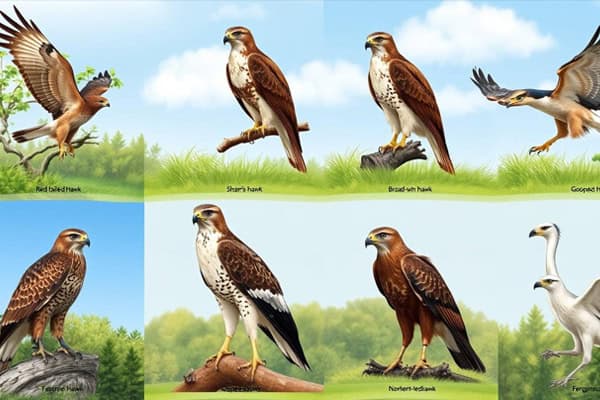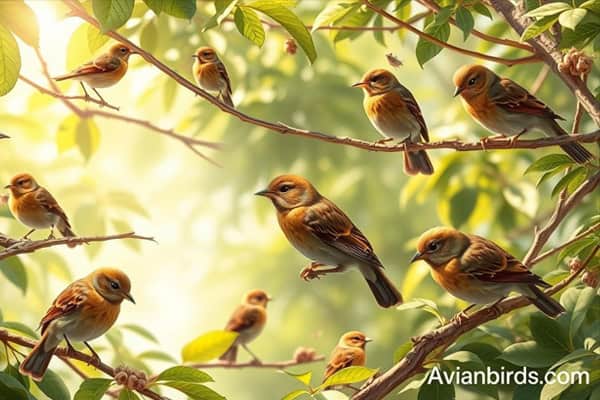8 Owls in Missouri (With Pictures)
Do you know Missouri is the land of Owls? Missouri’s wild is full of wonders, and owls are some of the coolest! There are 8 types of owls here, each with its own special look and sound. Owls are awesome hunters and their secret lives have always made people curious. We’ll take a peek at where they live, what they munch on, and how we can keep them safe. If you love birds or just like learning about nature, come explore the secret world of Missouri’s owls with us!
1. American Barn Owl
- Common name: Barn Owl
- Lifespan: Up to 10 years
- Size: About 34 to 38 cm long
- Weight: Between 400 and 600 grams
- Wingspan: Ranges from 29 to 36 cm
- Conservation Status: Least Concern

The American Barn Owl, part of a group that includes Western and Eastern Barn Owls, is known for its striking pale brown and creamy white colors. Also, These owls have sparked many myths with their mystical looks. They’re night creatures, hiding by day and hunting at night. From March to June, they find mates for life, with males seeking perfect nests. Their diet? Mostly small mammals like voles and mice, but they need lots because they burn energy fast. Sadly, pesticides have hurt their numbers in North America, but they’re tough and can bounce back.
2. Barred Owl
- Common name: Barred Owl
- Lifespan: Up to 8 years
- Size: Between 40 and 63 cm long
- Weight: Ranges from 610 to 1,150 grams
- Wingspan: Approximately 96 to 125 cm
- Conservation Status: Least Concern
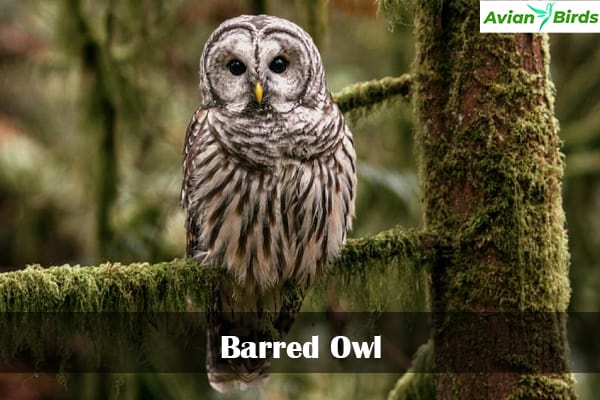
Barred Owls have cozy territories, never straying more than 6 miles from home. You’ll spot them across the eastern U.S. and southern Canada, sporting brownish-grey feathers with dark belly stripes. They’re like the American Barn Owls, sticking with one partner for life. Come February, it’s romance time, and they nest in forest tree hollows. Their menu? Mostly small critters, but they’ll listen out for a juicy rabbit by rivers and wetlands. With a strong 3 million count, they’re doing okay, but we’ve got to watch out for their forest homes and keep their dinners clean.
3. Long-eared Owl in Missouri
- Common name: Long-eared Owl
- Lifespan: 10 to 27 years
- Size: Between 31 and 40 cm long
- Weight: Ranges from 160 to 435 grams
- Wingspan: Approximately 86 to 102 cm
- Conservation Status: Least Concern
The Long-eared Owl masters the art of hide-and-seek with its brown and black feathers, blending into pine trees like a pro. These owls are famous for their ghostly calls echoing through the forests. When March rolls around, it’s nesting time, and they take over old hawk nests or tree holes. They feast on small mammals and sometimes frogs or lizards if they’re hungry.
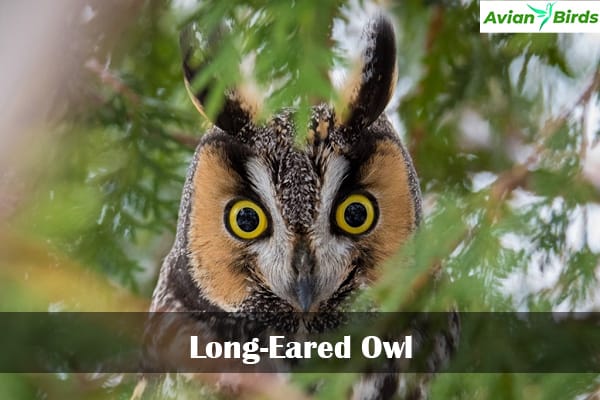
Sadly, their numbers are dropping because of lost homes and car accidents. But they’re tough cookies, spreading out across the globe and not on the endangered list yet. They’re the ninjas of the owl world, unseen but heard from afar!
4. Eastern Screech-Owl
- Common name: Eastern Screech Owl
- Lifespan: 8 to 10 years
- Size: Between 16 and 25 cm long
- Weight: Ranges from 121 to 244 grams
- Wingspan: Approximately 46 to 61 cm
- Conservation Status: Least Concern
The Eastern Screech-Owl is a tough little bird that thrives in North America, even where humans live. It has two looks: reddish in the south and greyish in the north, blending with the woods. These owls like their alone time but pair up in April to start families.

They’re mostly loyal, but sometimes males switch mates. They eat lots of small animals and bugs, and at night, they hunt with super hearing. They’re not endangered, but we need to keep their homes safe and their food clean.
5. Great Horned Owl
- Common name: Great Horned Owl
- Lifespan: 25 to 50 years
- Size: Between 43 and 64 cm long
- Weight: Ranges from 1200 to 1600 grams
- Wingspan: Approximately 91 to 153 cm
- Conservation Status: Least Concern
Great Horned Owls are night-time masters of disguise with brown-speckled feathers. Their “horns” are just feathers, possibly for showing off or chatting with other owls. They start families early, with males doing fancy flights to find a home in January. They’re not builders; they move into old nests from other big birds.

These owls eat what they can find, like voles and rabbits, hunting in the dark with their sharp claws and beaks. Sadly, people’s actions have hurt their numbers a lot. They used to be seen as pests, and even now, some folks illegally hunt them. They’re not endangered yet, but we need to watch out for them.
6. Snowy Owl
- Common name: Snowy Owl
- Lifespan: 10 to 28 years
- Size: Between 52.5 and 64 cm long
- Weight: Ranges from 1706 to 2426 grams
- Wingspan: Approximately 146 to 183 cm
- Conservation Status: Vulnerable
The Snowy Owl is a stunning bird from the Arctic, known for its brilliant white feathers. Unlike most owls, it’s active day and night, adapting to the Arctic’s varying daylight. These owls don’t make nests; instead, females scrape the ground for their eggs. They’re wanderers, traveling far from their Arctic homes to North America in winter.
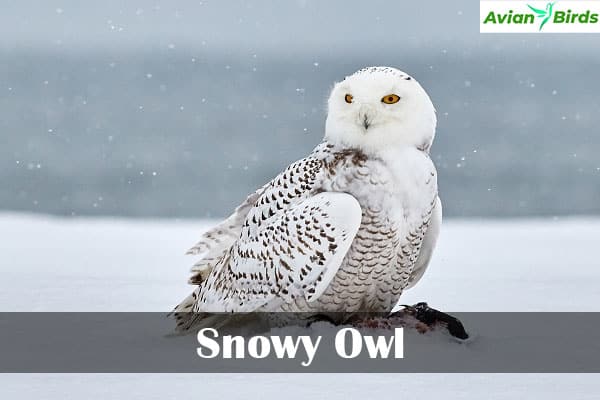
Males show off with flight dances and treats to woo females. In Missouri, they hunt small mammals and other critters, using their size and sharp talons. Sadly, climate change threatens them, shrinking their numbers as their prey and icy homes dwindle. Let’s hope these beautiful birds can weather the storm.
7. Short-eared Owl
Common name: Short-eared Owl
Lifespan: 12 years
Size: Between 34 and 43 cm long
Weight: Ranges from 206 to 475 grams
Wingspan: Approximately 85 to 110 cm
Conservation Status: Least Concern
The Short-Eared Owl stands out in the owl world, not just for its speckled brown feathers and striking wing bars, but for its unusual daytime hunting. These owls are social during the breeding season in March, nesting on the ground in open spaces like meadows.

They eat a variety of prey, from voles to sparrows. Sadly, their numbers are falling due to habitat loss and accidents. Yet, they’re adapting and spreading, keeping them out of the endangered zone for now.
8. Northern Saw-whet Owl
- Common name: Northern Saw-whet Owl
- Lifespan: 7 to 17 years
- Size: Between 17 and 22 cm long
- Weight: Ranges from 54 to 151 grams
- Wingspan: Approximately 42 to 56.3 cm
- Conservation Status: Least Concern
The Northern Saw-Whet Owl is a tiny, secretive bird found across North America, including Missouri. It’s known for its round, cream face with brown streaks, yellow eyes, and a mix of deep brown and light colors on its body. Its name comes from its call, reminiscent of a sharpening saw.
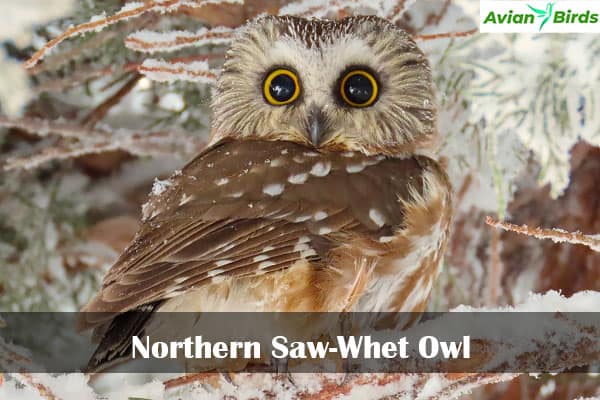
During breeding season in March, these owls pair up, but males might woo multiple females if food is plenty. They nest in old woodpecker holes or nest boxes. Their diet includes small mammals and various small animals.
They’re skilled hunters, catching prey with their sharp talons and beaks, even managing larger prey. Despite facing threats like habitat loss, they’re not considered endangered yet.
Check Our Previous Articles:
Frequently Asked Questions:
Q1. What is the most common owl in Missouri?
The most common owl in Missouri is the Eastern Screech Owl.
Q2. What do Missouri owls eat?
Missouri owls typically feed on small mammals like mice, voles, and shrews, as well as insects, birds, and occasionally fish.
Q3. What is the owl habitat in Missouri?
Owls in Missouri inhabit a variety of environments including forests, woodlands, prairies, and farmland, preferring areas with ample trees for nesting and hunting.
Q4. Does Missouri have snow owls?
Snow owls are not native to Missouri; they primarily inhabit Arctic regions and are rarely found in the state, usually appearing only during occasional migrations.


